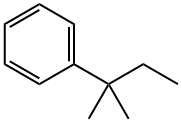A3191012
Dodecanoyl chloride , 98% , 112-16-3
Synonym(s):
Dodecanoyl chloride;Lauroyl chloride
CAS NO.:112-16-3
Empirical Formula: C12H23ClO
Molecular Weight: 218.76
MDL number: MFCD00000740
EINECS: 203-941-7
Update time: 2022-07-08
PRODUCT Properties
| Melting point: | -17 °C |
| Boiling point: | 134-137 °C/11 mmHg (lit.) |
| Density | 0.946 g/mL at 25 °C (lit.) |
| vapor pressure | 0.5Pa at 20℃ |
| refractive index | n |
| Flash point: | >230 °F |
| storage temp. | Store below +30°C. |
| solubility | Soluble in ethanol and methanol. |
| form | Liquid |
| color | Clear |
| Water Solubility | reacts |
| Sensitive | Moisture Sensitive |
| BRN | 1281201 |
| Stability: | Stable. Incompatible with strong oxidizing agents, amines, strong bases. Do not allow to come into contact with water or moisture. |
| InChIKey | NQGIJDNPUZEBRU-UHFFFAOYSA-N |
| CAS DataBase Reference | 112-16-3(CAS DataBase Reference) |
| NIST Chemistry Reference | Dodecanoyl chloride(112-16-3) |
| EPA Substance Registry System | Dodecanoyl chloride (112-16-3) |
Description and Uses
Lauroyl chloride is used as tailoring agent for chemical modification of nanocelluloses of different length, nanofibrillated cellulose and cellulose nanocrystals and in the preparation of acylated collagen with water solubility and better surface activity. It is also employed as organic low-friction boundary lubricant in the preparation of novel polyvinyl alcohol hydrogel.It is used in the synthesis of hemicellulose-based hydrophobic biomaterials.
Safety
| Symbol(GHS) |  GHS05 |
| Signal word | Danger |
| Hazard statements | H314 |
| Precautionary statements | P280-P303+P361+P353-P304+P340+P310-P305+P351+P338-P363-P405 |
| Hazard Codes | C |
| Risk Statements | 34-37-29-22-14 |
| Safety Statements | 26-36/37/39-45-8 |
| RIDADR | UN 3265 8/PG 2 |
| WGK Germany | 3 |
| TSCA | Yes |
| HazardClass | 8 |
| PackingGroup | II |
| HS Code | 29159080 |
| Hazardous Substances Data | 112-16-3(Hazardous Substances Data) |
| Toxicity | LD50 orally in Rabbit: 200 - 2000 mg/kg |
| Limited Quantities | 1.0 L (0.3 gallons) (liquid) or 1 Kg (2.2 lbs) (solid) |
| Excepted Quantities | Max Inner Pack (30g or 30ml) and Max Outer Pack (500g or 500ml) |



